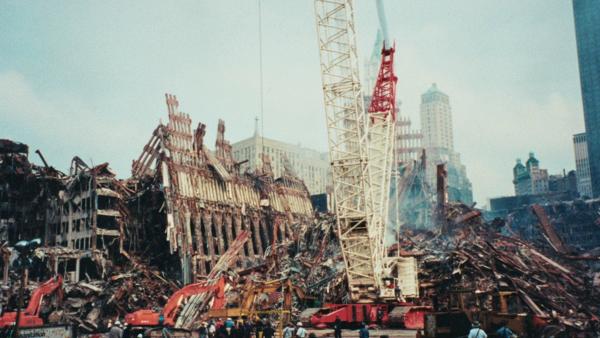It’s a crisis that President Donald Trump predictably provoked by pulling out of the Iranian nuclear deal just over a year ago — with no real Plan B beyond imposing ever-tougher sanctions on the Iranian regime.
But the story gets more complicated, because in the last few weeks, Trump has sent mixed messages regarding his true intentions.
Last week, he said he wanted to talk to the Iranians (which they have rejected). Yet, in contrast, in May, Trump tweeted that a war with Iran would be “the official end of Iran.” And after the US drone was shot down on Thursday, he
tweeted, “Iran made a very big mistake!”
On Thursday, Trump approved strikes against Iranian targets such as some missile batteries and radars. He then abruptly called
off the strikes.
This begs the question: Does anyone have a clue what Trump’s endgame is in Iran — including the President himself?
The Iranian regime, which is now concerned about its own survival, is responding by resuming its nuclear enrichment program and taking actions across the Middle East, designed to put pressure on the Trump administration.
The enemy always gets a vote in any conflict and the Iranian deep state — the Islamic Revolutionary Guard Corps (IRGC) and its elite Quds Force — as well as Iranian proxies around the Middle East are fighting back in multiple ways that are below the threshold where the United States must respond, but enough to signal their anger with the Trump-imposed sanctions.
A week ago, according to US Central Command, Iranian forces attacked two oil tankers in the Strait of Hormuz between Oman and Iran (Iran denies responsibility). This is significant given that a third of the world’s seaborne oil transits the strait.
Also this month, Houthi rebels in Yemen — armed with Iranian missiles –launched attacks at an airport in Saudi Arabia, wounding 26 and sending a clear message that Iran can turn the heat up on the Trump administration’s close ally, Saudi Crown Prince Mohammed bin Salman.
The Iranian regime also understands that Trump is quite sensitive to the
price of oil, which tends to spike whenever tensions rise in the Middle East.
And oil prices jumped on Thursday to over
$64 a barrel after the Iranians shot down the US drone.
Killing the Iran deal
After Trump pulled out of the Iran deal in 2018, the US imposed new sanctions that have
crippledthe Iranian economy, which now exports less than half of the oil it did before the new round of sanctions.
On the campaign trail, Trump had repeatedly denounced the Iranian nuclear agreement as
“the worst deal ever.”Criticsof the deal — Trump included — pointed out that the 2015 agreement hadn’t constrained the Iranians from intervening around the Middle East from Syria to Yemen, nor had it stopped their aggressive ballistic missile program. Also “sunset” provisions in the deal meant that Iran could theoretically resume certain aspects of their nuclear weapons program a decade after signing the agreement.
Meanwhile, the Iranian regime had benefited when the United States and the other parties to the nuclear deal — Britain, China, France, Germany and Russia — had lifted their crippling sanctions.
Certainly, these critiques were all true, but supporters of the deal pointed to the fact that the International Atomic Energy Agency repeatedly certified that Iran was
sticking to the agreement— and it wasn’t developing nuclear weapons.
The agreement further prevented the Iranians from enriching weapons-grade uranium until 2030. And the United States’ European allies that were also signatories to the Iran deal supported keeping the deal in place.
Indeed, supporters of the deal pointed out that if Trump were ever to strike a deal with North Korea about its nuclear weapons program, he would be
luckyto get something that looked like the Iran deal. And, bottom line, a regionally aggressive Iran without nuclear weapons was a much better outcome than a regionally aggressive Iran armed with nuclear weapons.
On October 3, 2017, then-Secretary of Defense James Mattis
testified before the Senate Armed Services Committee that Iran was adhering to the agreement. When independent Sen, Angus King of Maine asked Mattis whether he believed the deal was in US national security interests he replied, “Yes, senator, I do.”
Assuming that Hillary Clinton would likely win the 2016 presidential election, the then-Republican-controlled Congress had
passed a measure that the President needed to certify to Congress every 90 days that the Iranians were in compliance with the agreement.
This measure meant that every three months Trump had to sign off on a deal that he hated and that would invariably lead to tensions between the President and key members of his national security team, such as Mattis, who thought that exiting the deal didn’t make much sense since the Iranians were in compliance with the terms of the agreement.
Enter John Bolton
John Bolton, an advocate for regime change in Iran, took over as national security adviser in early April 2018. Since personnel is often policy, it was hardly surprising that with Bolton now in place Trump announced on May 8, 2018 that he was pulling out of the Iran nuclear agreement.
As Bolton stood off to the side behind him, Trump gave a press conference at the White House
saying, “The fact is that this was a horrible one-sided deal that should never, ever been made.”
Trump seemed to take particular pleasure in killing deals negotiated by President Barack Obama’s administration — whether it was the Iran nuclear agreement, the Paris climate accord or the Trans-Pacific Partnership trade deal that was designed to contain China — even if he didn’t propose viable alternatives in their place.
After pulling out of the Iran deal, the Trump administration imposed tough new sanctions on Iran, while the Europeans stuck to the deal.
Trump’s Iran strategy didn’t seem like much of an alternative plan — beyond trying to destroy the Iranian economy in order to foment protests against the regime, potentially leading to regime change, long a
goal of Bolton’s.
As a result of the rising tensions in the Middle East since May, the Trump administration has dispatched an aircraft carrier group to the region and
deployeda
totalof 2,500 more troops to the Middle East.
The US doesn’t have much leverage over the Europeans when it comes to Iran, since they continue to support the Iran deal. And
Trump himself is also quite
unpopular in these countries, so if the conflict with Iran deepens, don’t expect much help from them.


























































